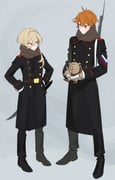white army
The Russian White Army (also known as the White Guard or White Movement) refers to a loose confederation of anti-Bolshevik forces that fought against the Red Army during the Russian Civil War (1917–1923). Emerging after the October Revolution, the White Army was composed of monarchists, conservatives, liberals, and other factions united by their opposition to the Bolsheviks. Unlike their unified opponents, the Whites lacked a single cohesive ideology or leadership, which contributed to their eventual defeat.
The White Movement began forming in 1917 as resistance to the Bolshevik seizure of power. Key leaders included Admiral Alexander Kolchak, General Anton Denikin, and General Pyotr Wrangel. Operating across vast regions like Siberia, South Russia, and the Far East, the Whites received support from foreign powers such as the Allied Intervention forces (e.g., Britain, France, and the United States). Despite early successes, internal divisions, corruption, and lack of popular support led to their collapse by 1923.
Symbolism
The term "White" contrasts with the "Red" of the Bolsheviks, drawing from historical Russian symbolism where white represented purity and loyalty to the Tsar. The Whites often used the double-headed eagle and the tricolor flag (white, blue, red) of the Russian Empire as their emblems.







